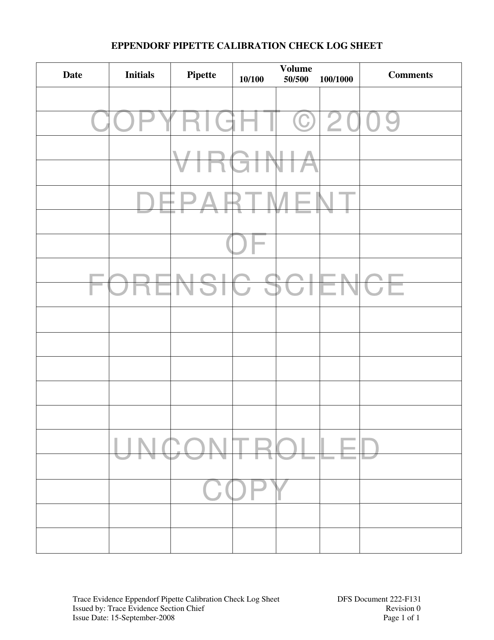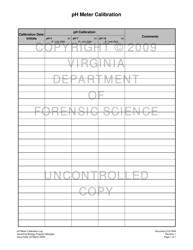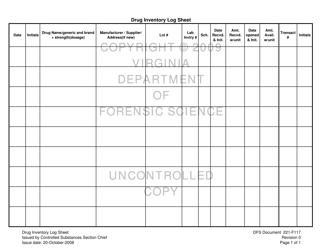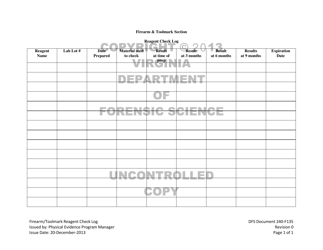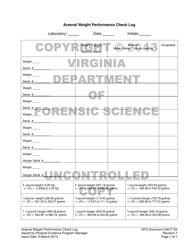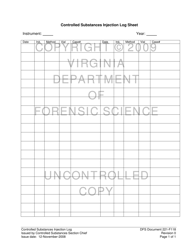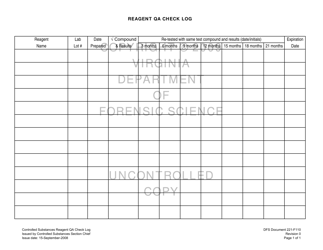DFS Form 222-F131 Eppendorf Pipette Calibration Check Log Sheet - Virginia
What Is DFS Form 222-F131?
This is a legal form that was released by the Virginia Department of Forensic Science - a government authority operating within Virginia. As of today, no separate filing guidelines for the form are provided by the issuing department.
FAQ
Q: What is DFS Form 222-F131?
A: DFS Form 222-F131 is a document used for Eppendorf Pipette Calibration Check Log Sheet in Virginia.
Q: What is an Eppendorf Pipette?
A: An Eppendorf Pipette is a precision instrument used for measuring and transferring small volumes of liquids.
Q: What is a calibration check log sheet?
A: A calibration check log sheet is a record of the calibration checks performed on a specific instrument, in this case, an Eppendorf Pipette.
Q: Why is pipette calibration important?
A: Pipette calibration is important to ensure accurate and reliable measurements, as well as to comply with quality control standards.
Q: How often should pipettes be calibrated?
A: Pipettes should be calibrated regularly, typically every 6 to 12 months, or more frequently if they are used heavily or for critical applications.
Q: Who can perform pipette calibration?
A: Pipette calibration can be performed by trained technicians or through contracted calibration services.
Q: What information is recorded on a calibration check log sheet?
A: A calibration check log sheet typically records information such as the date of the calibration check, the person responsible for the check, the results of the check, and any comments or observations.
Q: What is the purpose of maintaining a calibration check log?
A: The purpose of maintaining a calibration check log is to keep a record of the calibration checks performed, allowing for traceability and providing evidence of compliance with quality assurance requirements.
Q: Are there any specific regulations or standards for pipette calibration?
A: Yes, there are industry standards and guidelines, such as ISO 8655, that provide recommendations for pipette calibration procedures and frequency.
Form Details:
- Released on September 15, 2008;
- The latest edition provided by the Virginia Department of Forensic Science;
- Easy to use and ready to print;
- Quick to customize;
- Compatible with most PDF-viewing applications;
- Fill out the form in our online filing application.
Download a printable version of DFS Form 222-F131 by clicking the link below or browse more documents and templates provided by the Virginia Department of Forensic Science.
